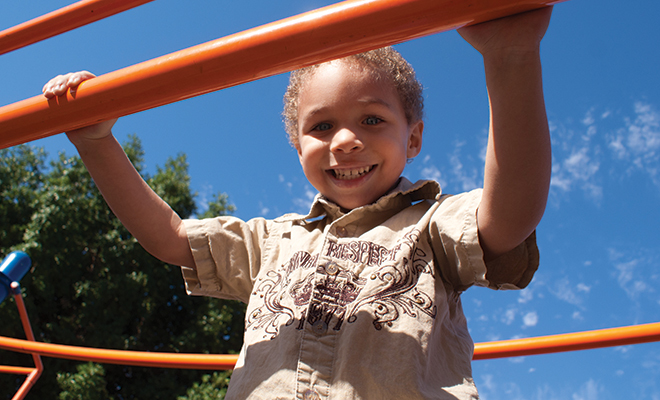
Let’s go play outside!
“You have brains in your head. You have feet in your shoes. You can steer yourself any direction you choose.” Dr. Seuss, in the timeless book Oh, The Places You’ll Go! provides good advice for anyone raising children these days, because he tells them they are destined to climb mountains, cross streams and bridges and walk tall.
Studies show that children who spend time outside being active will grow up to be healthier, happier more successful adults. Time in the sunshine raises levels of Vitamin D, which promotes good health and protects young ones from bone problems, heart disease, diabetes and other health issues that can develop with age.
ADHD is also significantly squelched with exposure to the great outdoors, and active youth consistently score higher on standardized tests in math, reading, writing and listening. Breathing in that green-space air reduces children’s overall stress levels. It’s true–nature makes you nicer!
Richard Louy coined the term “nature-deficit disorder” in his book The Last Child in the Woods, when he described how family life has changed over the last two decades. He is adamant that nature has a developmental effect on children. Less time outside can cause childhood obesity, which in turn leads to such problems as sleep apnea and some social and psychological issues. The Mayo Clinic reports that the rate of obesity for preschoolers in the United States has more than doubled over the past 30 years and has tripled for children 6 to 11 years of age.
Louy knows, as do moms, that playing outside, planting gardens, climbing trees and collecting rocks actually improve eyesight and expose children to varied nutritional options. Plus, when you grow your own food, it’s much more fun to eat, especially when little hands plant the seeds and water them with their own watering can.
Vitamin G, for Green, is just as essential as Vitamins D, B, E and C. That’s not to say that some television and games can’t be played, but a good variety of educational shows and games make a difference as well. Psychologists involved in this green versus electronic debate have shared their findings with school administrators.
The result? More outside time, more recess time and greener playgrounds. When a child runs around the playground, he or she will listen to the teacher better. All children need to energize their little bodies, just like adults. It’s estimated that children spend five and a half hours a day on passive indoor activities. According to the International Play Equipment Manufacturers Association and its Voice of Play initiative, in addition to increased physical activity, both group interaction and social development for children take place on a playground in a number of ways; children learn about taking turns, exercising self-control and striking up conversations with peers. Playgrounds improve child health, encourage creativity and respect, increase problem-solving skills and increase attention and focus. Voice of Play also acknowledges that playground equipment encourages imaginative play through which children can experiment with expressing different emotions and learn about life’s possibilities.
Linnea M. Anderson, assistant archivist, Social Welfare History Archives, University of Minnesota, who has written about the history of playgrounds, explains, “Early playground advocates believe that social interactions in playgrounds benefit the country as a whole and build citizenship and neighborliness when children have a chance to play together.”
Albert Einstein said, “Play is the highest form of research.” So grab that butterfly net and jar and get outside! HLM
Sources: apa.org, carters-kids.org, infed.org, nwf.org, naturalearning.org and voiceofplay.org.
Carter Oosterhouse, TV personality and founder of Carter’s Kids, a non-profit that builds playgrounds mainly in economically disadvantaged neighborhoods, said, “We love to build playgrounds because it helps address child inactivity and improve child health. What we also see time and time again is that when children are at the playground, it also encourages adults. Neighbors meeting neighbors. A sense of community is formed.”
To tear your child away from the video screen, make outdoor activities intriguing and fun. By playing on your son or daughter’s interests, you can create a world of imagination right outside your door. Here are some suggestions.
– Go to your community playground where your child can interact with other kids.
– Obtain color samples from the local hardware store and hide them around your yard or neighborhood. Get a special prize for each color; for example, for a red chip give the child a red book to read, or an orange chip gets them an orange to eat.
– Take a canoe ride. Whether you live near a creek, lake or stream, public parks have them available. Build your own little boat to sail in the water.
– Start a dog walking business with your child. Together, you’ll meet new neighbors and enjoy the outdoors. Plus, the pooches will enjoy the outings.
– Sidewalk chalk is a great way to inspire creativity on the driveway or patio.







